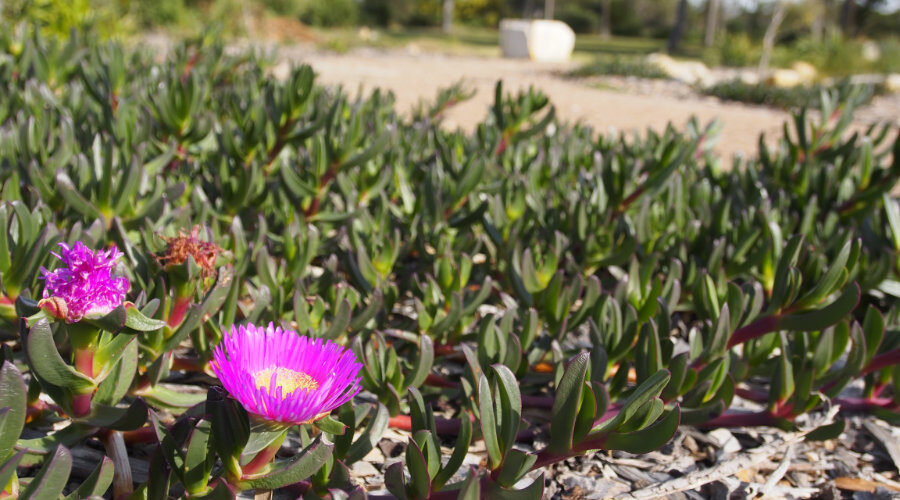Pigface
Story and photos by Russ Grayson
Pig face is a sprawling succulent common on coastal sand dunes. Noticable for its bright magenta or pale yellow-coloured flowers and thick, juicy angular leaves, it is an Australian bush food.
Common name: Pigface.
Botanic name: Carpobrotus glaucescens.
Growth form: Scrambling groundcover with succulent, fleshy, usually green leaves and magenta or pale yellow, daisy-shaped flowers mainly in Spring and Summer, although it may flower at other times as well.
Centre of diversity: Australia.
Natural habitat: Subtropical to temperate coasts. Sandy soils. A pioneer species of coastal sand dunes.
Useful part: Fruit pulp and triangular, succulent leaves.
Uses: Food, groundcover.
- As a food, pigface fruit pulp is edible and the triangular cross-sectioned leaves are also edible raw or cooked and preserved as pickles. The fruit of the plant can be made into a jam.
- As a groundcover, pigface protects soils from erosion and temperature extremes.
Reproduction: Cuttings, seed.
Garden design notes: Use pigface to protect soils from erosion and to retain moisture in soils exposed to strong sunlight. Established as an orchard area groundcover.
Notes: The juice of the leaves is said to relieve insect bites.
Photos: ©Russ Grayson. Creative Commons, attribution.

